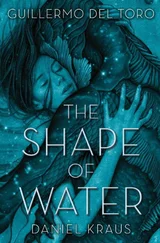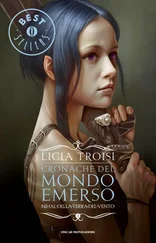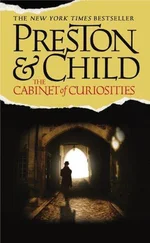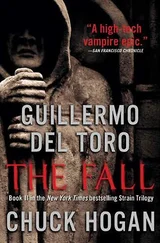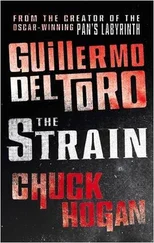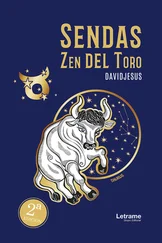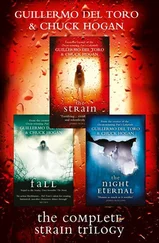“Never throw out anything you love,” Ray said on many occasions. In each of these homes, a brilliant man’s head and heart had seemingly exploded to fill a house, inviting visitors to scrutinize, linger, and be nourished. But Guillermo’s house, by dint of sheer passion and obsession, tops them all.
Guillermo charmingly refers to Bleak House as his “collection of strange crap.” In a more serious mood, he adds, “You’re God as an artist, and it’s really just the way you arrange. I think a director is an arranger. I direct this house, and everything goes somewhere, and I can tell you why, and there are thematic pairings, or there is a wall with all blue on it. There is nothing accidental. And my movies are like my house. I hang every painting, and if the frame shows a clock or a watch, or shows an apple, or shows a piece of furniture, I chose that, and I ask the art director and the production designer to show it to me before, and I walk the set and I say, ‘Take this out’ or ‘Bring this in.’ It really is the beauty of the director, I think, in the way I understand the craft.”
On that first visit, Guillermo led me deeper into the house. I was agog at the cinematic, literary, artistic, and zoological feast—akin to the food piled high to tempt Ofelia at the Pale Man’s table in Pan’s Labyrinth. Wandering Bleak House is a Through the Looking-Glass experience, as if one has actually stepped into one of Guillermo’s films.
Through glass doors leading to the backyard, I spied the life-size bronze of Ray Harryhausen, one of Guillermo’s spiritual godfathers. Then we turned down a hallway lined with wild art, gleaming weird mechanisms—some insectile, others mechanical—tin toys, Pez dispensers, anatomical models, and a miniature of the Time Machine from the eponymous 1960 film by George Pal, another member of Guillermo’s pantheon. Hovering as if in benediction, now tied permanently to a wall as he’d once been strapped to Ron Perlman’s back in Hellboy , was the torso and head of the Russian corpse, a role voiced in the movie by Guillermo himself. Just off the hall were the How to Look at Art volumes that started it all, and at the end of the corridor, in a glass case, was the first Pirates of the Caribbean model Guillermo so lovingly assembled and painted as a child.
And then the pièce de résistance. Like a character out of Poe or Dickens, Arthur Machen or M. R. James, or any of the legion of outré writers of whom Guillermo is an acolyte, my host beckoned me to enter his sanctum sanctorum , the room where Guillermo writes his scripts at a big old wood desk or, more often, on the overstuffed leather sofa. Best of all, at the flick of a switch, lightning flashed, thunder rumbled, and rain cascaded down false windows looking onto endless night.
We settled into the leather sofa and began to talk.
In fashioning his house, Guillermo credits Forrest J Ackerman as a key inspiration, but there is another guiding principle that predates Ackerman and gives a deeper meaning to Bleak House.
Call it Guillermo del Toro’s cabinet of curiosities.
After all, everything surrounding this fabulous, larger-than-life character, from his films to his house to his notebooks to his speaking engagements, is chock-full of extravagant, peculiar, and extraordinary items—his world is an overflowing credenza of marvelous things. Further, the term’s provenance makes it particularly fitting.
Originally, cabinet of curiosities referred to a personal collection of spectacular, eclectic, and outlandish objects accumulated by a wealthy person, often an aristocrat. Also known in German as wunderkammer (“wonder room”) and kunstkammer (“art room”), these “cabinets” were not pieces of furniture but entire rooms full to bursting with every unusual and attractive bauble that could be found in the natural world or realms constructed by humanity. Hitting their peak of popularity in the seventeenth century and spurred by the discovery of the New World, these cabinets might house clockwork automata, Chinese porcelain, the crown of Montezuma, a madonna made of feathers, chains of monkey teeth, a rhinoceros horn and tail, conjoined twins, a mermaid’s hand, a dragon’s egg, real or supposed holy relics, vials of blood that had rained from the sky, an elephant head with tusks, carved indigenous canoes, an entire crocodile hanging from the ceiling, a two-headed cat, and as one list concluded, “anything that is strange.”
At the time, science had not yet developed standardized methods of classification, and museums had not yet been established for public consumption, so these cabinets of curiosities grew at the whims of their owners in bizarre and breathtaking ways, each its own deformed, magnificent, unique universe.
Sporting titles redolent of their times, those famous for their cabinets included the Holy Roman Emperor Rudolf II, Archduke of Austria Ferdinand II, Peter the Great, Augustus II the Strong, King Gustavus Adolphus of Sweden, John Tradescant the elder, Elias Ashmole, and the deliciously named Ole Worm.
In some fascinating way, these wild, untamed accretions were autobiographies of their owners, spotlights playing over the darkest corners of their minds, Dorian Gray portraits they could display without ever admitting that these collections revealed true images of themselves.
Francesca Fiorani wrote in Renaissance Quarterly , “The Kunstkammer was regarded as a microcosm or theater of the world, and a memory theater. The Kunstkammer conveyed symbolically the patron’s control of the world through its indoor, microscopic reproduction.”
In a modern context, what better possible description could you have for a motion picture?
Without a doubt, Bleak House is Guillermo del Toro’s great cabinet of curiosities, deliberately so. It is a microscopic reproduction of the world seen through his own lens. But it is not his only one. Guillermo has crafted an even more personal and miniaturized domain.
At the beginning of his cinematic career, Guillermo’s mentor Jaime Humberto Hermosillo insisted he keep notes. “I started with a tape recorder,” Guillermo recalls, “and I would record every idea that came to mind. I had it in my pocket. But I never transcribed those thoughts, and I lost the tapes. Then I started carrying the Mexican equivalent of the Moleskine book, and it was a very poorly put-together spiral notebook, so the leaves started to get loose. Finally, around 1986 or ’87, I bought what was then a revolutionary thing, the Day Runner. They were like eighty dollars when they first came out, and I thought they were the equivalent of a portable computer. I fell in love with the blue notepaper, and I still have sixty or seventy packets. I said, ‘I’m going to buy enough blue paper for the rest of my life.’ I started keeping notes in there, and I found it really great because it was very well put together, very sturdy. I carried it on location. It rained and it didn’t get wet. It was fantastic. So that was the beginning of the notebooks.”
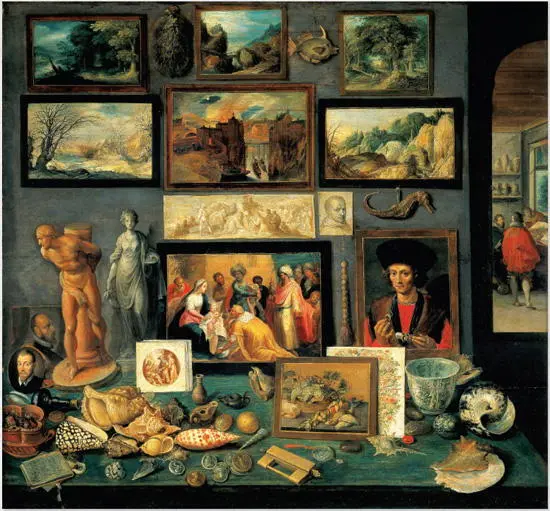
Frans Francken the Younger’s Chamber of Art and Antiquities (1636), a painting depicting a seventeenth-century cabinet of curiosities made up of art, collectibles, and oddities from the natural world.
Initially, Guillermo jotted down notes and illustrations mainly for himself and for those he was working with. “Usually those notebooks were used only to communicate with actors or designers, to show them the world.”
With the birth of his first daughter, Mariana, Guillermo began to rethink the notebooks as mementos to leave his daughter—as something that might interest and entertain her in the future. “I gave myself the luxury of buying inks and pens, and I thought, ‘I’m going to make it an art project that she will find fun to look at.’ So I changed my handwriting, did the elongated Ts and elongated Ls to give it an old-fashioned feel, bought a quill. I wanted to make it fun for her, like finding letters. So every note that is there is not to myself, but to her.”
Читать дальше


